Research - (2021) Volume 9, Issue 6
A Prospective Study of Efficacy of Epidural Steroid Therapy in Lumbar Radicular Pain
Vinoth KR, Srinivasan N and Raja Sekar MR*
*Correspondence: Raja Sekar MR, Department of Orthopaedics, Sree Balaji Medical College & Hospital Affiliated to Bharath Institute of Higher Education and Research, Chennai, Tamil Nadu, India, Email:
Abstract
The present study included to know efficacy of epidural steroid in lumbar radicular pain and to determine the effect of epidural steroid injections (ESIs) in patients who exhibit lumbar radicular pain symptoms for more than 3 months with determining the effect of epidural steroid injections (ESIs) in patients who exhibit lumbar radicular pain symptoms for more than 3 months and to assess improvement in functional outcome in lumbar disc disease patents after treatment. This study focuses on to evaluate duration of relief and long-term outcome after epidural steroid injections and to assess the quality of improvement in pain relief and to assess patient satisfaction after steroid injection. All outcome measure (RMDQ score, Satisfaction score, ODI index, VAS, finger to floor distance) shows reduction of score which could be because of steroid deteriorates over a period of time, Progression of existing pathology and non-compliance of lumbar stabilization programme. The Clinical improvement over time can be graded based on the analysis of serial questionnaire scores. The goal of this prospective study will be to clinically evaluate the pain relief and the duration to get back to normal working conditions.
Keywords
Lumbar radicular pain, Sciatica, Epidural steroid injections (ESIs), Prostaglandin synthesis, Satisfaction score, Lumbar IVDP
Introduction
Low back ache is a quite common health problem, affecting up to eighty (80%) of the population at some point in life [1]. It was found to have the sixth top burden of the 291 conditions studied and caused more disability than any other condition. It is well known that back ache accounts for a large proportion of health care expenditures and that these expenditures have been increasing substantially, in fact these expenditures are increasing faster than overall health expenditures [2]. Low Back ache and sciatica are continuing leading cause of disability. Its lifetime incidence is 80%. The prevalence is high in our country because of difficult working situations and living environment.
This is a disabling condition for young adults and is the quietest common cause of limitation of physical activity, leading to loss of “working man days” [3]. The cause of low back ache remains a complex and likely multifactorial spectrum of degenerative diseases of the lumbar spine. Pain produced from problems with the intervertebral discs, misalignment of vertebra, zygapophysial joint arthritis, muscles, fascia, ligaments, or neural structures is difficult to determine. DePalma et al; found that the occurrence of zygapophysial joints was 31%, sacroiliac joints was 18%, and lumbar discs was 42%. He confirmed the lumbar disc as the most common cause of chronic low back pain in adults [4]. Sciatica is the most caused by Intervertebral disc prolapse but some patients with features suggesting sciatica does not show any disc prolapse in MRI or CT scan making it a paradox, this led to thinking of alternate cause of sciatica [5]. As the technology advanced, the understanding about sciatica has greatly improved leading to the understanding that pathogenesis of sciatica is indeed mediated by a combination of Inflammation, immunity, and factors of mechanical compression [6].
Steroids are supposed to reduce the inflammation by chemical, immunologic and mechanical lesions. Although the definite mechanism of action is not completely known, there is proof that corticosteroid provides pain relief by blockage of pro-inflammatory mediators and causing a reversible local anaesthetic effect [7]. Steroids can be used in patients with sciatica when they do not respond to nonsteroidal anti- inflammatory drugs. Local delivery of the steroids with or without a local anaesthetic agent into the epidural space which will cause an effect that lasts longer. So, in patients who do not respond to the conservative treatment within 3 months (NICE guidelines 2009) and not fit for surgical treatment, epidural steroid injections (ESI) can be administered. Epidural steroid injections have been used for sciatica since they were introduced around 60 years ago. Multiple studies have been performed on this subject and still the results were unequivocal [8].
Materials and Methods
Study location: The Department of Orthopaedics in Sree Balaji Medical College and Hospital, Chromepet, Chennai.
Study type: Prospective study.
Study duration: July 2017 to December 2019. This study shall be spread over a period of 30 months, but recruitment of new patients shall stop by DECEMBER 2018 so that the minimum follows up period shall be 12 months. Thus, the study recruitment period is of 18 months and study period was spread over a period of 30 months.
Study subject: 50 patients with lumbar radicular pain.
Study tools: Patients inclusion and exclusion criteria are given below:
Inclusion criteria
- Age more than18 years and less than 60 years.
- Back pain of duration greater than three months and radiculopathy with radiological evidence (MRI and X- ray of lumbar disc disease).
- MRI scan shows a herniated nucleosus pulposus (HNP) of intervertebral disc with below 50% intervertebral canal narrowing with manifestations of backache and radiculopathy HNPs at various interspaces (L3–L4, L4–L5, L5–S1) and with differing axial presentations (e.g., far lateral, paracentral, and central protrusion) were examined.
- Patient less than 18 years and more than 60 years.
- Back pain less than 3 months of duration.
- Patient refusal for the procedure.
- MRI scan shows a herniated nucleosus pulposus (HNP) of intervertebral disc with more than 50% intervertebral canal narrowing.
- Neurological deficit.
- Patient with history of allergy to contrast media, steroids, and local anaesthetic agents.
- Previous lumbar spine surgeries or epidural steroid injections.
- Multi-level degenerative spine disease unstable spine vertebral compression fractures, Spondylo listhesis, cauda equina syndrome and arachnoiditis.
- Patient diagnosed to have Bleeding disorders, active cancer, history of substance abuse, current psychiatric co-morbidity, pregnancy, diabetes mellitus and congestive cardiac failure.
This prospective study was approved by hospital ethical committee. Proforma was created containing patient’s history and examination of lumbar spine was noted. Patients who met inclusion criteria were admitted and obtained written and informed consent was taken in patient’s own language after explanation of all risks, benefits, purposes, and outcomes of the study. Routine blood investigations including prothrombin time, bleeding time and clotting time, X-ray Lumbar spine AP and Lateral (Flexion and Extension) view and MRI lumbar spine with whole spine screening were routinely done. Pre-anaesthetic fitness was obtained and taken up for procedure. All the patients were assessed with Patients satisfaction scale, Revised Owestry disability index (ODI), Roland Morris low back pain Disability Questionnaire (RMDQ), visual numeric pain scale, Measurement of finger-to floor distance at preprocedure, 1st week, 1st month, 3rd month, 6th month and 12th month. All the scores have been shown in annexure 2 -6. All the information data collected, at the end of the study was statistically analysed and compared with the similar studied done before.
Statistical analysis
The data was entered in Microsoft excel and analysed using Statistical Package for the Social Sciences (SPSS) software version 21. The demographic data is presented as frequencies, measures of central tendency and dispersion. Appropriate statistical tests of significance (p value and independent t test for quantitative data) are used to study the difference between pre-procedural injection and 12 months after injection. Paired t-test was applied to compare changes in functional status and pain intensity. P value of <0.05 was considered as significant.
Results
The following analysis was made after collecting data for this prospective comparative study of 50 lumbar radicular treated with epidural steroid injection patients in the Department of Orthopaedics of Sree Balaji Medical College and Hospital, Chromepet, Chennai, during the period from July 2017 to December 2019. Table 1 to Table 6 and Figure 1 to Figure 6 explained detailed results.
Table 1: Age distribution.
| Age (years) | Number of patients | Percentage (%) |
|---|---|---|
| 21-30 | 13 | 26 |
| 31-40 | 11 | 22 |
| 41-50 | 13 | 26 |
| 51-60 | 9 | 18 |
| 61-70 | 4 | 8 |
| Total | 50 | 100 |
Table 2: Gender distribution.
| Gender | Number of patients | Percentage (%) |
|---|---|---|
| Male | 39 | 78 |
| Female | 11 | 22 |
| Total | 50 | 100 |
Table 3: Etiology of patients.
| Etiology | Number of patients | Percentage (%) |
|---|---|---|
| Intervertebral disc prolapse | 43 | 86 |
| Lumbar Stenosis | 7 | 14 |
| Total | 50 | 100 |
Table 4: Distribution of radiating pain.
| Distribution of radiating pain | Number of patients | Percentage (%) |
|---|---|---|
| Bilateral radiating pain | 18 | 36 |
| Unilateral radiating to right side | 15 | 30 |
| Unilateral radiating to left side | 17 | 34 |
| Total | 50 | 100 |
Table 5: Distribution of patients with duration of symptoms.
| Duration (months) | Number of patients | Percentage |
|---|---|---|
| 3 to 6 months | 20 | 40 |
| 7 to 12 months | 21 | 42 |
| 13 to 18 months | 6 | 12 |
| 19 to 24 months | 2 | 4 |
| >24 months | 1 | 2 |
| Total | 50 | 100 |
Table 6: Level of disc pathology.
| Level of disc | Number of patients | Percentage (%) |
|---|---|---|
| L3-L4 | 5 | 10 |
| L4-L5 | 30 | 60 |
| L5-S1 | 15 | 30 |
| Total | 50 | 100 |
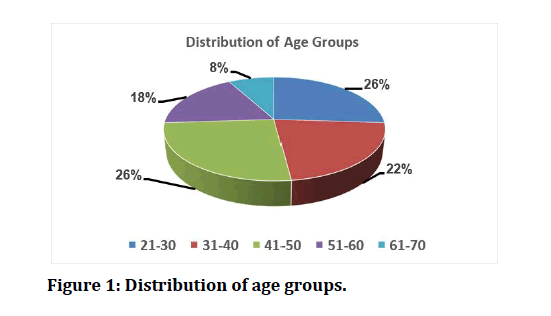
Figure 1: Distribution of age groups.
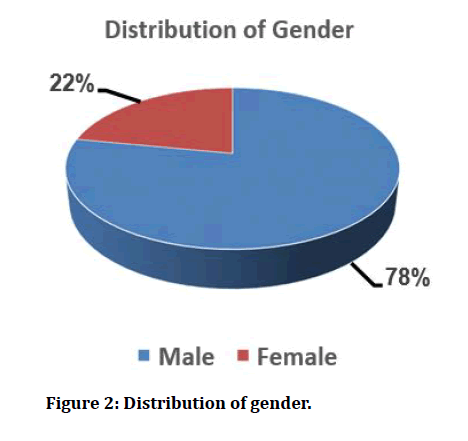
Figure 2: Distribution of gender.
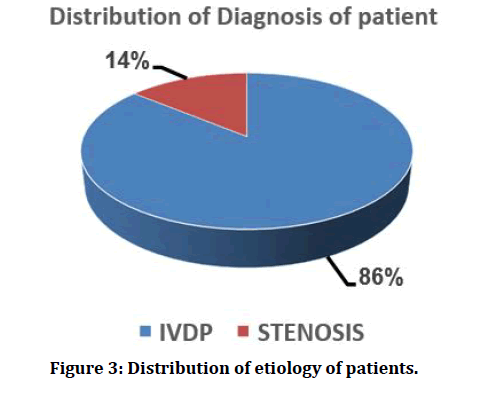
Figure 3: Distribution of etiology of patients.
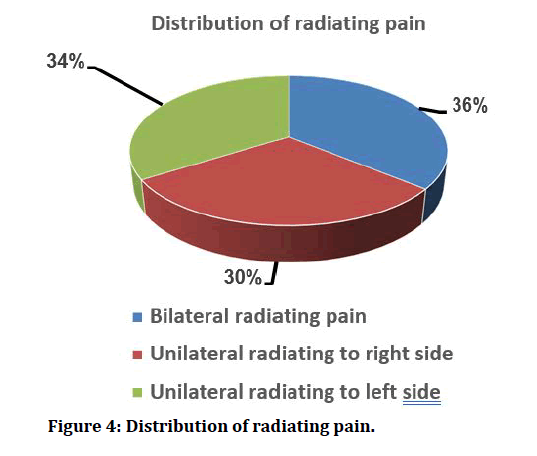
Figure 4: Distribution of radiating pain.
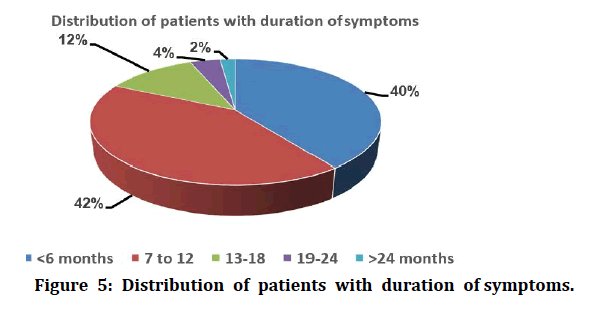
Figure 5: Distribution of patients with duration of symptoms.
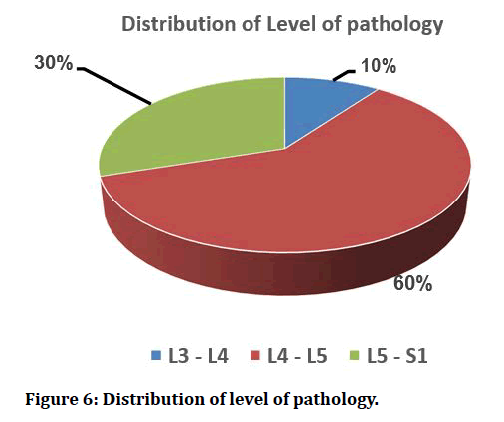
Figure 6: Distribution of level of pathology.
Discussion
The projected spending in USA in 1998 for back ache was $90.7 billion dollars. It was 11 billion pounds in UK in 2000 and low back ache was found to be one of the most expensive illnesses as the direct and indirect charges were assessed to be $ 9.17 billion dollars [9,10]. The management of low back ache is a challenge not mere to the orthopaedic surgeons but also for anesthesiologists in pain clinics and neurosurgeons because of its higher incidence, chronicity and hampered social and professional life of patients. Epidural steroid injections (ESI) are given because abnormal concentrations of nociceptive and inflammatory mediators around inflamed nerve lead to chemical neuro- radiculitis and corticosteroids block prostaglandin synthesis and inhibit nociceptive C-fiber conduction. Steroids classically work by the elimination of the rate limiting step by the enzyme prostaglandin A2 to release arachidonic acid from cell membranes. In this prospective study we analyse the functional outcome of epidural steroid injection for lumbar radicular pain. This case series were conducted on fifty patients of lower back ache with radicular pain, who came to our casualty or outpatient department of Orthopaedics in SREE BALAJI MEDICAL COLLEGE AND HOSPITAL, Chromepet, Chennai, during the period from JULY 2017 to DECEMBER 2019.In our study of 50 cases most of patient’s age group range from 2nd to 6th decade of life. There were thirteen (26%) patients in the group of 20 -30 years, eleven (22%) patients in the age group of 31 -40 years, thirteen (26%) patients in the group of 41 -50 years, nine (18%) patients in the group of 51 - 60 years, four (8%) patients in the age group of 61-70 years. Mean age of the patients was 41.1 years indicates peoples in this age are highly active in daily life and exposed to various physical stress. So, there is ninety two percent (92%) of working population in this study group i.e., 20 -60 year’s age group. Our study was comparable with many other studies, majority of patients were in working age population.
In the present study there was a male preponderance of 39 (78%) patients and majority of them were in 3rd to 5th decade of life. 11 (22%) patients were female, with ratio of 3.5:1 is quite differ from literature, as it says, low back pain can affect sooner (<20) or later (>60) almost everyone in life [12]. In a previous study it is concluded that male patients were highly involved in low back ache it could be due to having a job like heavy lifting, pushing or pulling and long driving.
In the present study 41(82%) patients were having symptoms for < 1year, among which 20(40%) for <6months and 21(42%) for 7-12 months, 6(12%) patients were having symptoms from 13 to 18 months, 2(4%) patients were having symptoms from 19 to 24 months, only one patient beyond 24 months, with mean duration of pain being 9.56 months [11-24].
In the present study most of the patients 18(36%) out of 50 were having bilateral radiating pain while 15(30%) out of 50 patients were had right and 17(34%) had left sided radicular pain. In our present study MRI level of disc pathology out of 50 patients, level of disc abnormality was most common level at L4-L5 in 30(60%) patients, next common level is L5 -S1 in 15(30%) and at L3 -S4 in 5 (10%) patients.
Conclusion
In our short-term study, carefully selected patients with strict selection criteria has shown that about 14% of patients required surgery after epidural steroid, 86% patients were comfortable during the follow up of one year. Hence, we conclude that epidural steroid injection: As a step prior to operative intervention in patients with lumbar IVDP and canal stenosis. A short term significant functional improvement in both statistically and clinically in IVDP patients. This method can be considered as simple, safe, effective faster relief, less expensive, nonoperative and minimally invasive treatment modality. This modality could be a definitive treatment in some patients or a intermediate treatment where surgery can be postponed for some more time. Since our’s is a shortterm study we cannot endorse for its long term success, for which a long term study is required.
Funding
No funding sources.
Ethical Approval
The study was approved by the Institutional Ethics Committee.
Conflict of Interest
The authors declare no conflict of interest.
Acknowledegements
The encouragement and support from Bharath University, Chennai is gratefully acknowledged. For provided the laboratory facilities to carry out the research work.
References
- Spijker-Huiges A, Groenhof F, Winters JC, et al. radiating low back pain in general practice: Incidence, prevalence, diagnosis, and long - term clinical course of illness. Scand J Prim Health Care 2015; 33:27–32.
- Hoy D, March L, Brooks P, et al. The global burden of low back pain: estimates from the global burden of disease 2010 study. Ann Rheum Dis 2014; 73: 968 -974.
- Martin BI, Deyo RA, Mirza SK, et al. Expenditures and health status among adults with back and neck problems. JAMA 2008; 299:656-664.
- DePalma MJ, Ketchum JM, Saullo T. What is the source of chronic low back pain and does age play a role? Pain Med 2011; 12:224-233.
- Srujun V. Functional outcome in patients with sciatica after giving epidural steroid injection. Doctoral dissertation, Christian Medical College, Vellore, India.
- Stafford MA, Peng P, Hill DA. Sciatica: A review of history, epidemiology, pathogenesis, and the role of epidural steroid injection in management. British J Anaesthesia 2007; 99:461-73.
- Abdi S, Datta S, Trescot AM, et al. Epidural steroids in the management of chronic spinal pain: A systematic review. Pain Physician 2007; 10:185-212.
- Young IA, Hyman GS, Packia- Raj LN, et al. The use of lumbar epidural/ transforaminal steroids for managing spinal disease. J Am Acad Orthop Surg 2007; 15:228–38.
- https://www.worldcat.org/title/genuine-works-of-hippocrates/oclc/603835
- Delaney TJ, Rowlingson JC, Carron H, et al. Epidural steroid effect in nerves ad meninges. Anesth Analg 1980; 59:610–614.
- Fuller HW. On rheumatism, rheumatic gout and sciatica: The pathology, symptoms and treatment. London: John Churchill, 1852.
- Schmorl G. Ueber Knorpelknotchen an der hinterflache der wirbelbandscheiben. Fortschr ad Geb d Rontgenstraglen 1929; 40:629–34.
- Andrea A. Ueber knorpelknotchen am hinteren ende der wirbelbandscheiben im bereich des spinalkanals. Beitr 2 Path Anat UZ Allg Path 1929; 82:464–74.
- Eleberg CA. The extradural ventral on ondromas (eccondroses) their favourite sites, the spinal cord and root symptoms they produce and their surgical treatment. Bull Neurosurg Inst New York 1931; 1:350–66.
- Kelly M. Pain due to pressure on nerves. Spinal tumours and the intervertebral disc. Neurology 1956; 6:32–6
- Kotilainen E, Sonninen P, Kotilainen P. Spinal epidural abscess: An unusual cause of scaitica. Eur Spine J 1996; 5: 1–3.
- Corning JL. Spinal anaesthesia and local medication of the cord. N Y Med J 1885; 42:483–485.
- https://zenodo.org/record/1428422#.YMsSHKgzZPY
- https://link.springer.com/article/10.1007%2FBF02792160
- https://www.karger.com/Article/Abstract/443729
- De Pasquier M, Leri M. Injections intra et extra - durales de cocaine a dose minime dans le traitement de la sciatique.Valeur comparee des deux methods: resultats immediats et tardifs. Bull Gen Ther 1901; 142:196 –223.
- Viner N. Intractable sciatica: the sacral epidural injection: an effective method of giving relief. Can Med Assoc J 1925; 15: 630– 4.
- Evans W. Intrasacral epidural injection in the treatment of sciatica. Lancet 1930; 16: 1225 –28.
- Mason HL, Myers CS, Kendall EC. Chemical studies of the suprarenal cortex II. The definition of a substance which possesses the qualitative action of cortin its conversion into a diketone closely related to androstenedione. J Biol Chem 1936; 116:267–76.
Author Info
Vinoth KR, Srinivasan N and Raja Sekar MR*
Department of Orthopaedics, Sree Balaji Medical College & Hospital Affiliated to Bharath Institute of Higher Education and Research, Chennai, Tamil Nadu, IndiaCitation: Vinoth KR, Srinivasan N, Raja Sekar MR, A Prospective Study of Efficacy of Epidural Steroid Therapy in Lumbar Radicular Pain, J Res Med Dent Sci, 2021, 9(6): 180-186
Received: 01-Apr-2021 Accepted: 17-Jun-2021 Published: 24-Jun-2021
